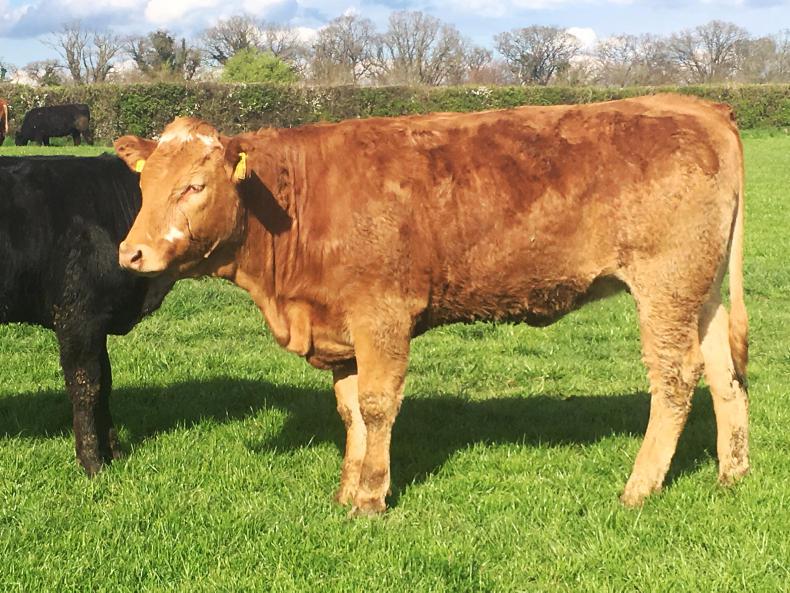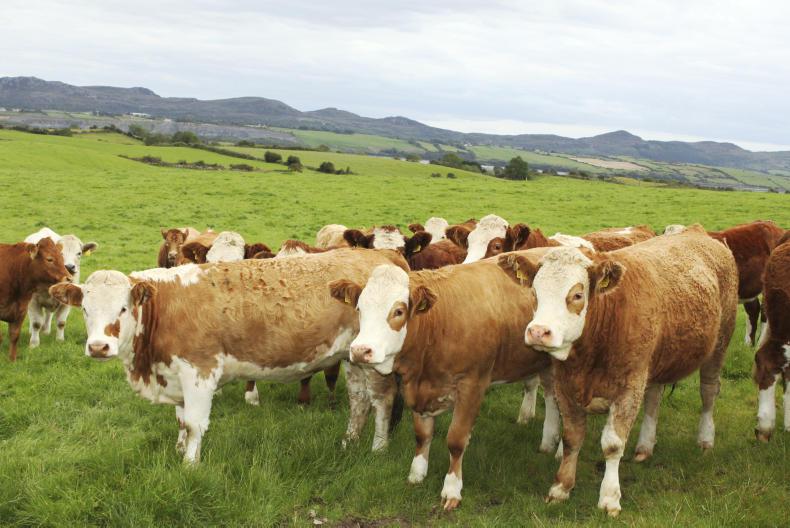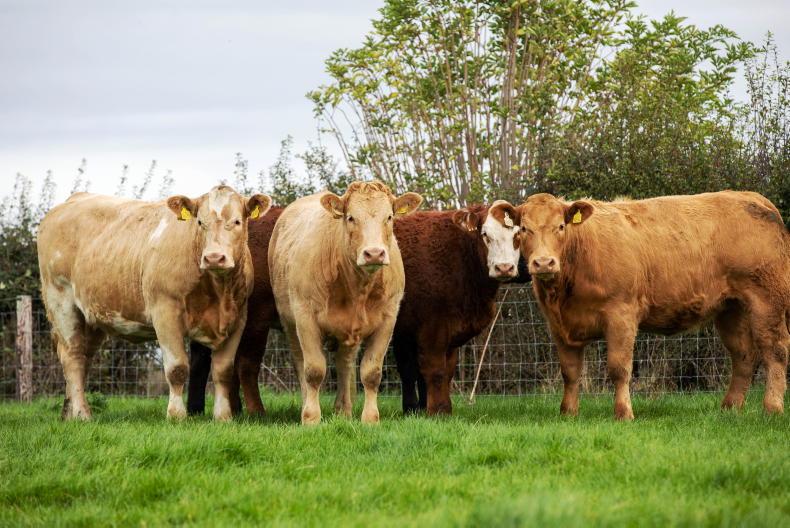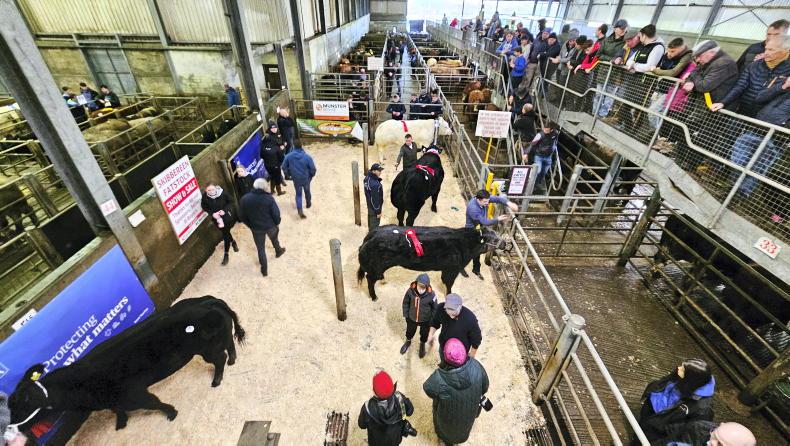The breeding season is almost upon us. One of the most important jobs prior to breeding is picking replacement heifers. Decisions made on heifers now will potentially have a direct impact on your herd for the next four to eight years while their genetics could remain in the herd for decades.
How many heifers do you need?
The first thing to consider is how many replacement females do you need? The two factors which have the biggest impact on the total number of heifer replacements required are cow longevity (number of calvings per cow) and age at first calving.
Based on a 50-cow herd, Table 1 shows the number of replacement heifers that need to be chosen in any one breeding season, as well as the total number of replacements that need to be on the farm at any one time.
Nationally, the average number of calvings per cow is 4.4. Looking at Table 1, this suggests that the average replacement rate each breeding season should be between 20-25%. In a 50-cow herd that’s 10 to 13 heifers per breeding season.
But it is important to remember conception rate. The aforementioned replacement rates are based on calvings. Picking numbers prior to breeding should factor in that conception rates are usually only between 85-95% of total animals bred.
Age
Looking back to Table 1, it is interesting to see that a farm calving heifers at 36 months of age needs 50% more replacements on farm than those opting to calve at 24 months. This is the main reason behind calving heifers at 24 months; a reduced stocking rate and at least 10% more productive cows in the herd (than when calving heifers at three years of age).
The cost of these extra heifers also can’t be ignored. For a 50-cow herd working off a 20% replacement rate, the difference in calving at 24 months and 36 months is €500/month or €50/heifer/month.
For those that struggle to meet the targets for heifers calving at 24 months, 30 months is a good option. However, this is only feasible in split-calving herds or on farms that buy-in replacements.
Nationally, only 23% of heifers calved between 22 and 26 months of age in 2018.
Weight
Table 2 shows the minimum target weights for replacement heifers at first service by breed.
The weights are based on a target to breed heifers at 60% of their mature bodyweight.
Weighing heifers will also show the calf and weanling growth rate. This is a good indicator of the dam’s milking ability and the calf’s genetic potential for growth and should be considered when picking heifers for the bull.
Visual appearance
While €uro-Star indexes have taken the guess work out of picking replacement heifers to a certain extent, the truth of the matter is that visual appearance should still always be number one. But visual appearance isn’t necessarily how nice an animal looks, but more so how functional it looks.
Heifers must have sound legs and feet and be able to move well. Also take into account the structural soundness of the parents.
Furthermore, temperament is also critical. Do not keep flighty and excitable heifers or heifers from flighty cows.
€uro-Star index
For those looking to go one step further than visual appearance, a look at the replacement index will give an indication of how successful or not a particular heifer will be when she calves, based on her genetics. The replacement index projects how suitable a female will be in terms of calving ability, milk, fertility and ultimately being a low maintenance, functional suckler cow.

Eligible females must be over 16 months old at the target date and four- or five-star on the replacement index, within or across the breed.
Those looking to improve the genetic potential of their herd should be looking towards breeding from four- and five-star heifers on the replacement index.
For those in BDGP, using the €uro-Star index is very important. Participants are required to have the equivalent to 50% of their reference number in eligible females on 31 October 2020.
For BDGP II participants, it's 20% in 2020 and 50% in 2022. Eligible females must be over 16-months-old at the target date and four- or five-star on the replacement index, within or across the breed. Heifers kept as replacements now will play a significant role in meeting these targets.
The breeding season is almost upon us. One of the most important jobs prior to breeding is picking replacement heifers. Decisions made on heifers now will potentially have a direct impact on your herd for the next four to eight years while their genetics could remain in the herd for decades.
How many heifers do you need?
The first thing to consider is how many replacement females do you need? The two factors which have the biggest impact on the total number of heifer replacements required are cow longevity (number of calvings per cow) and age at first calving.
Based on a 50-cow herd, Table 1 shows the number of replacement heifers that need to be chosen in any one breeding season, as well as the total number of replacements that need to be on the farm at any one time.
Nationally, the average number of calvings per cow is 4.4. Looking at Table 1, this suggests that the average replacement rate each breeding season should be between 20-25%. In a 50-cow herd that’s 10 to 13 heifers per breeding season.
But it is important to remember conception rate. The aforementioned replacement rates are based on calvings. Picking numbers prior to breeding should factor in that conception rates are usually only between 85-95% of total animals bred.
Age
Looking back to Table 1, it is interesting to see that a farm calving heifers at 36 months of age needs 50% more replacements on farm than those opting to calve at 24 months. This is the main reason behind calving heifers at 24 months; a reduced stocking rate and at least 10% more productive cows in the herd (than when calving heifers at three years of age).
The cost of these extra heifers also can’t be ignored. For a 50-cow herd working off a 20% replacement rate, the difference in calving at 24 months and 36 months is €500/month or €50/heifer/month.
For those that struggle to meet the targets for heifers calving at 24 months, 30 months is a good option. However, this is only feasible in split-calving herds or on farms that buy-in replacements.
Nationally, only 23% of heifers calved between 22 and 26 months of age in 2018.
Weight
Table 2 shows the minimum target weights for replacement heifers at first service by breed.
The weights are based on a target to breed heifers at 60% of their mature bodyweight.
Weighing heifers will also show the calf and weanling growth rate. This is a good indicator of the dam’s milking ability and the calf’s genetic potential for growth and should be considered when picking heifers for the bull.
Visual appearance
While €uro-Star indexes have taken the guess work out of picking replacement heifers to a certain extent, the truth of the matter is that visual appearance should still always be number one. But visual appearance isn’t necessarily how nice an animal looks, but more so how functional it looks.
Heifers must have sound legs and feet and be able to move well. Also take into account the structural soundness of the parents.
Furthermore, temperament is also critical. Do not keep flighty and excitable heifers or heifers from flighty cows.
€uro-Star index
For those looking to go one step further than visual appearance, a look at the replacement index will give an indication of how successful or not a particular heifer will be when she calves, based on her genetics. The replacement index projects how suitable a female will be in terms of calving ability, milk, fertility and ultimately being a low maintenance, functional suckler cow.

Eligible females must be over 16 months old at the target date and four- or five-star on the replacement index, within or across the breed.
Those looking to improve the genetic potential of their herd should be looking towards breeding from four- and five-star heifers on the replacement index.
For those in BDGP, using the €uro-Star index is very important. Participants are required to have the equivalent to 50% of their reference number in eligible females on 31 October 2020.
For BDGP II participants, it's 20% in 2020 and 50% in 2022. Eligible females must be over 16-months-old at the target date and four- or five-star on the replacement index, within or across the breed. Heifers kept as replacements now will play a significant role in meeting these targets.










SHARING OPTIONS